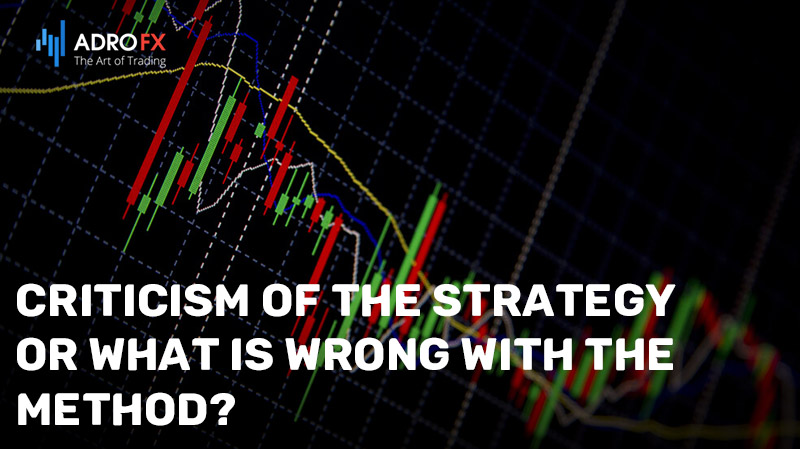Averaging Losing Trades: Avoid or Master?

Strategies that allow participants to minimize losses are an important part of trading. One such strategy is averaging on positions. Below you will learn what the strategy of position averaging is, how it is applied, and what results it allows to achieve with competent use.
What Is Averaging On Losing Positions in Forex Trading
Position averaging is a risk-management strategy, designed to reduce the average cost of a trade. Its essence is to open repeated positions in case losses are incurred on the current one.
This strategy is used if the trader expects growth or decline, but has incorrectly predicted the entry and the market is still moving against the trader.
For example, the initial trade is placed at a price of $40. After that, the value of the asset falls to 35, and we again open a position in the same volume, but at a lower price. As a result, the average price of the position drops to $37.5.
Averaging, in simple words, is a strategy based on the idea that the price will come back sooner or later, involving the opening of repeated positions, similar to the first losing position for averaging.
In theory, the averaging can last indefinitely as long as the price falls, adding more and more contracts. It should be understood that this strategy requires a large deposit and firm confidence in actions.
The theoretical effect of this strategy is obvious - if the chart turns according to the trader's prediction, the price will have to pass twice as little distance as in the case where averaging has not been used.
This is because a loss-making movement takes place on one open position, while a profitable one takes two, thus doubling the profit relative to the loss. Therefore, if a trader predicts a reversal despite a losing trade, this strategy will make it possible to compensate for the losses and often even to make a profit.
However, in practice every averaging, especially when trading with leverage, rapidly drains the deposit in case the direction of price movement has not changed in the desired direction, which is fraught with the loss of all trader's funds.
Criticism of the Strategy or What is Wrong with the Method?

Traders who practice position-averaging strategy in trading hope that a price correction will occur soon. It seems to them that if they decrease the value of the average entry price, the price will need to cover a shorter distance to hit breakeven.
This method can work, which makes the trader think it is some kind of magic wand. But the moment will come when the current deposit may not be enough.
There is an opinion that in the majority of cases, the position averaging does not work on forex, because all competent traders sell, but do not buy when the price falls. This method can work only in conjunction with technical analysis.
But it should be noted that it works if used by professionals. The averaging strategy is practiced even by market makers.
Position averaging in forex refers to several quite controversial strategies, which can be successfully implemented, in most cases, only by professionals. The main reason for that is that this strategy is effective only if the trader's forecast is accurate. If the investor is wrong, the use of averaging can significantly increase losses.
Also, the use of averaging in trading on the financial market has a negative side from the psychological aspect. Sometimes this strategy triggers and makes inexperienced traders believe in its absolute efficiency which can lead to unpleasant consequences.
If the averaging of positions in trading is used too often, sooner or later it may fail to work with a large volume of transactions, turning the trader's losses from substantial to colossal.
It should also be noted that this strategy does not limit the losses, but helps to reduce them, so under no circumstances should averaging be used instead of Stop Loss. Every trader should have a clear trading strategy that includes a maximum allowable amount of losses, which should be limited by Stop Losses, otherwise, the riskiness of these trades becomes critical.
Tips For Avaerafing on Losing Positions
- Technical analysis is the basis of averaging. To use the strategy of averaging, it is necessary to carry out a qualitative technical analysis and make sure that the signals for the change of the price movement direction in the period which interests the trader really exist. If there is no confidence that the price will work out the necessary movement, it is better to fix losses than to apply the averaging.
- Free margin. You should never average a position repeatedly if this causes the risk of nullifying the deposit in the case of a reverse movement. The higher the leverage during trading, the greater should be the available balance on the account, which serves as a kind of buffer, protecting against a margin call.
- You should not increase the volume of trades. If you increase the lot size of each subsequent position, the averaging strategy will turn into the classical Martingale strategy, which has repeatedly demonstrated its danger.
- Averaging should not be abused. This strategy is a lifeline for losing trades, not a systematically used method. It is best to avoid averaging and trade according to your trading strategy using classic stop orders.
Conclusion
Averaging in trading refers to the number of strategies designed to minimize losses from losing positions. It is based on the assumption that the general forecast of the instrument price movement was made correctly, but the entry point was selected incorrectly.
This strategy can be quite effective if the forecasts underlying it turns out to be correct. Otherwise, the averaging only increases the trader's losses, often by several times. For this reason, averaging cannot be used as a systematically applied strategy, but it can be applied to reduce losses of individual trades.









